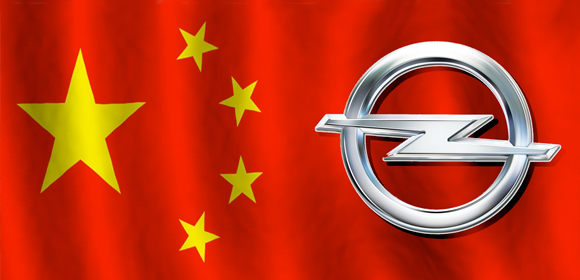Stellantis to Bank on Opel to Rejuvenate China Sales

Stellantis announced this week that its Chinese joint venture with GAC (Guangzhou Automobile Group Motor Co., Ltd.) will close one of its two factories in China. The joint venture was launched by GAC and Fiat Chrysler (FCA), which merged with PSA to become Stellantis. The joint venture, which has capacity to make 328,000 vehicles a year, sold only 12,288 in the first seven months this year, all Jeep-branded sport-utility vehicles.
The decision comes as Stellantis restructures operations in the world’s biggest auto market where it has struggled to sell cars.
GAC said in a statement that the closure will result in the transfer of production from Guangzhou to Changsha to increase the utilization rate of the remaining plant and lower cost. The Changsha factory has capacity to make 164,000 vehicles a year, still far more than the venture sells.
As well as the GAC partnership, Stellantis operates a joint venture in China with Dongfeng Motor Group, manufacturing Citroën and Peugeot models. It sold 47,788 cars between January and July. Dongfeng Motor Group earlier closed two plants to tackle overcapacity.
Both GAC and Dongfeng ventures are exporting China-made vehicles.
Stellantis Chief Executive Carlos Tavares said the company is working on a new China strategy, which will be in place by the end of the year.

What is perhaps more telling is that Tavares said Stellantis plans to introduce its Opel brand in China, offering fully electric vehicles. By disclosing this information about Opel’s introduction, is he inferring that this would be the end for Citroën and Peugeot as brands in China? Within Stellantis, a common EV passenger car platform called STLA is being developed. Such a strategy for Stellantis in China could mean that for the EV-passenger car market Opel will be taking the spotlight, while Jeep will be the brand promoted in the E-SUV segment.
The company announced in July that their STLA EV platform will be deployed in 4 sizes, be available with 3 electric drive modules and battery capacities from 37 kWh to more than 200 kWh. You can be assured that Citroën, Peugeot and Opel will share the same the STLA platform for same-size vehicles. If they compete in essentially the same market segment, they could cannibalize Opel’s sales and the brand’s foray into the Chinese market.
China’s automobile market is rife with competition. More than 25 million vehicles were sold last year, but several joint ventures between international automakers and local partners have been severed due to declining sales, as solely Chinese automakers have appeared and are prospering.
Mazda ended its joint venture with FAW last month, and Hyundai Motor’s tie-up with BAIC has sold one factory to the Chinese electric vehicle maker Li Auto .
Last year, Renault shut its less than five year venture with Dongfeng and in 2018, Suzuki exited its only Chinese joint venture with Changan.
Update — Sept. 8, 2021:
Dongfeng Motor Group said today it had sold shares equivalent to a 1.15% stake in Stellantis for about 600 million euros ($710 million USD). Dongfeng said it had completed the sale of 36.1 million Stellantis shares through an accelerated book building process (ABB) at a price of 16.65 euros each.
The sale is part of agreements signed by shareholders upon the merger deal between Fiat Chrysler and France’s Peugeot maker PSA, which created Stellantis at the beginning of this year. As part of the agreements Dongfeng, a former PSA investor, was required to sell around 36 million shares in Stellantis to third parties by the end of 2022.
No details were provided about who bought shares in the ABB. After the transaction, Dongfeng Motor Group retains a 4.5% stake in Stellantis and has agreed to a 90-day lock-up period on it. Stellantis other largest shareholders are Exor, the holding company of Italy’s Agnelli family, France’s Peugeot family and the French government.
